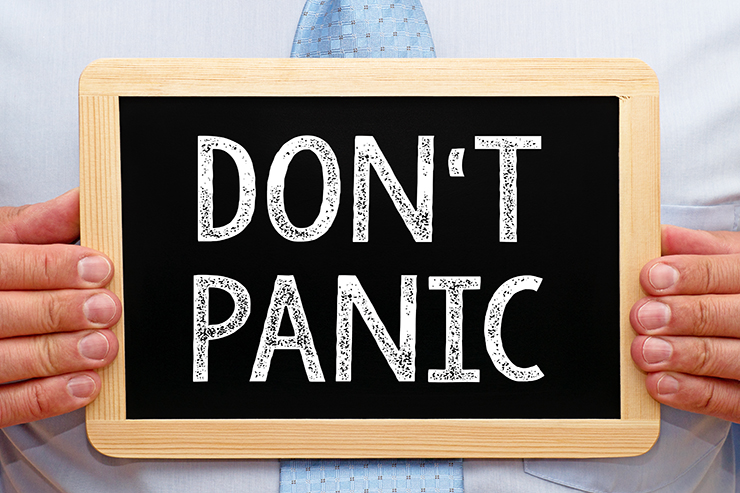
Image Credit: Shutterstock
Let’s be real.
We are facing enormous challenges, massive changes, and sudden shifts in every area of life – personal, professional, and societal. No area is untouched, and where we were just three weeks ago is so very different from where we are today. While we leaders are adept at change, and often the drivers of it, this level of change is unprecedented, even for us.
Shock
In our previous article, we talked about the “Six C’s of Leading through Crisis.” Its focus essentially was on absorbing the impact and guiding yourself and your team through the initial shock of it all.
If you or those you know have uttered statements like these, be assured, these are normal human reactions to shock.
“I have found myself exhausted and unmotivated, which is unusual for me.”
“I feel like a deer in the headlights; I’m not sure which way to turn.”
“People are looking to me for immediate answers, and I don’t have any.”
“I fix things. I make things happen. But right now, it seems everything is out of my control.”
“I have a compelling urge to get out and take action, but I am confined. This is causing anxiety and sometimes results in angry outbursts.”
These just mean you and your team are trying to absorb the shock. Follow the Six C’s to get through this period. Revisit them point by point as needed, like a shock-absorbing compass.
Stabilize
Here in the third week, we begin to see some level of stabilization – adjustments to new schedules, new environments, new tools, and new ways of doing business. It’s an acceptance of a new, interim normal. There will still be times where the shock and anxiety fight for the spotlight, but stabilization is emerging at this point.
How can you, as a leader, help to stabilize yourself, your team, your family, and your community?
1. Establish adapted routines.
There are things you need to do each day, week, and month to keep life and business moving forward.
You still need to eat, for example, but you will find adaptive ways to do so. This may mean calling for carryout instead of eating in a restaurant or making meals at home and from scratch.
Some adapted routines would be as follows:
- Students go back to school, but online.
- Restaurant workers prepare meals but serve via delivery or takeout.
- Medical professionals continue to serve, but with improvements in testing, tools, and procedures that will help to manage the crisis to the highest levels possible.
- Businesspeople go back to work but collaborate online or in tailored situations.
2. Establish adapted schedules.
Normal schedules are disrupted in times of crisis. The sooner a new normal schedule can be established, the better.
Here are some guidelines.
- Allow time for added rest and reflection. You (yes, you!) will need it.
- Purposely add in activities that give you energy. These may include reading, walking, gardening, visiting with a friend (by phone or video), tackling a project or engaging in a hobby, or any number of activities unique to you that help to recharge your battery.
- Have a regular time of physical activity.
- Eat meals on an adapted schedule so you are not tempted to graze all day on foods that will not benefit you during this time.
- If you are working, do so on a set schedule. If you are not, take that time to learn a new skill, search for opportunities, or do volunteer work.
- If you have children at home who are suddenly “on vacation,” help them set a schedule that keeps them on track.
3. Establish adapted habits.
Habits build upon each other – they are based on cues. When you remove the familiar cues, good habits can quickly go by the wayside.
If, for example, you are accustomed to a morning routine that includes getting up, dressed, out the door, and to the office, but suddenly, you don’t have to make the trip to the office; your whole morning routine could be disrupted. You may find yourself, as some have, in permanent pajama mode. Since how you look affects how you feel and how productive you are, be sure to set new cues and establish new habits that keep you on track.
Perhaps getting “out the door” now means taking a walk before returning to your home office. This may be enough to keep your morning routine on track.
Also keep in mind boundaries. When you work from home, you can begin to blur boundary lines – to where there is no distinction between work and the other areas of your life.
Establish habits that help you maintain a good, holistic life balance.
—
For more resources on Leading through Crisis, click here to learn about the Maxwell Method of Communications Impact Report.
As the CEO of Strength Leader Development, Deb Ingino is a highly sought-after international executive mentor, coach, trainer and speaker. Deb is well versed in global business operations and helps business leaders and their teams to discover and leverage their strengths, so they can create highly collaborative teams that deliver great results. With a refreshingly direct style, Deb helps leaders and their teams to deliver profitable results. Connect with Deb to learn more about her mentorship and coaching programs to equip you with advanced strategies to elevate your results.
+ view comments . . .